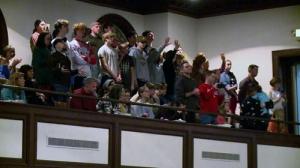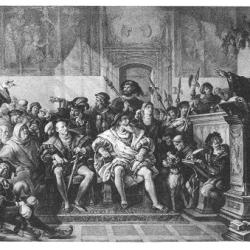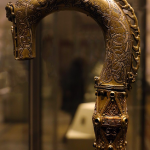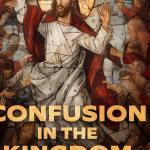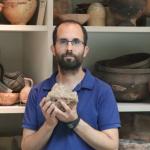See a good overview article about it (including several videos). My title precisely describes my initial reaction to this phenomenon that began on February 8th at Asbury University in Wilmore, Kentucky: a non-denominational college that is aligned with the Wesleyan-Holiness movement. It turns out that a similar revival also occurred there in 1970 (see a YouTube documentary about it).
It began with a chapel service led by Rev. Zach Meerkreebs, Envision Leadership Coordinator, from the Christian and Missionary Alliance denomination. His talk was about Romans 12:9-21 and what it means to love one another. It was great. I see nothing questionable in it whatsoever. He was talking about sanctification and discipleship. It’s classic Wesleyan-Holiness emphases. He said, “you cannot love until you are loved by Jesus.” [at 20:54 on the tape]
And he said (near the end): “The United States needs this kind of love. [It] needs a bunch of Christians experiencing the love of God so they can pour out the love of God; not through their efforts and not through their own knowledge, but because they are filled with His love.” [24:52]
A second possible revival has broken out at Lee University in Cleveland Tennessee on February 13th. It’s affiliated with the Church of God, a Holiness-Pentecostal denomination. Samford University in Samford, Alabama, is also experiencing what appears to be a revival. It was founded by Baptists and now calls itself simply “Christian.” And the same sort of event is taking place at Cedarville University in Cedarville Ohio: associated with the Southern Baptist Convention. (see: “Christian Revival outbreak at Asbury beginning to spread across the nation,” Rooted Expeditions, 2-20-23).
Cedarville University in particular shows that the movement is not merely among charismatic denominations. There is much more in play here than what many might criticize or disdain as mere “charismatic over-emotionalism.” To me that is a sign that it’s genuine and something we can rejoice in, while still exercising caution as it moves forward.
If college kids are reportingly being healed of anger and bitterness (and probably depression, because so much of that is going around), and ceasing various sins, and they are wholeheartedly worshiping Jesus with hundreds of others, and don’t want to leave, and are willing to wait in half-mile-long lines to do so, there is nothing “bad” in any of that. To the contrary, it’s a wonderful and much-needed thing, and I thank God for it (as far as I understand it so far).
I’ve had indirect involvement myself in two of the movements thought to be revivals in the last 60 years: the charismatic movement in both Protestant and Catholic circles, and the Jesus movement of the early 70s (with all the young, long-haired people, including my late brother Gerry). I’m also very fond of John Wesley and have read about the revivals associated with him, and edited The Quotable Wesley, which was published by Beacon Hill Press, a Protestant publisher.
My life was transformed in 1980 in an independent charismatic evangelical church (part of the Jesus movement itself), after having been involved in a Lutheran church that had fostered the Jesus movement as well. And I now attend a Catholic charismatic parish (Christ the King in Ann Arbor, Michigan). I received (I remain convinced) a profound filling of the Holy Spirit in the summer of 1980.
The fruit of it was reading the entire Bible, commencing apologetics research, street witnessing, and a conversion to a strong pro-life position, and rejection of liberal / anti-traditional social, socio-political, and so-called “liberated” or “free” sexual beliefs. This was real change. I experienced it. My life and my views changed as a result.
For 25 years I was a member of a very liturgically traditional Catholic parish, that offered the Latin Mass (Pauline, not Tridentine Mass) in a fabulous Gothic Revival building from the 1870s. So I’ve worshiped in very different settings, as both a Protestant and a Catholic. My approach is “worship and let worship.”
But as a budding apologist, I also dealt with one of the errors in Protestant charismatic circles in 1982, when I wrote a strong critique of the “name-it-claim-it / God heals everyone on command” error, which is strong in many Protestant charismatic circles. I had been highly influenced in doing so by Walter Martin, a prominent “cult watcher” and author of the book, The Kingdom of the Cults.
This would be my caution (and a certain “wait and see” tentativeness) now, regarding this latest possible revival. It looks good; I’m very happy to see it, but we must watch and see what happens; particularly if dubious messages about doctrine and theology (including alleged “prophecies”) start to come out of it. Even if it is perfectly legitimate, the devil will seek to corrupt it. He works doubly hard when he knows something is a real revival, bringing about transformed lives. So either way, he will be there with his conniving, corrupting schemes.
The initial modern Pentecostal revival, beginning in 1906 on Azusa Street in Los Angeles and lasting until 1915, for example, had a prominent anti-trinitarian wing. So that sent up a warning flag right away: at least for that portion of it. One who disbelieves in the Holy Trinity can’t even reasonably be regarded as a Christian.
In the Catholic Charismatic Renewal, which began in February 1967 at the Duquesne Weekend, and soon spread to Notre Dame, Michigan State University, and the University of Michigan, eventually manifested excesses in the leadership of some of the groups that arose, having to do with “shepherding” and so forth (overly strict leadership practices). Ralph Martin, one of the leaders (who is now a member of my parish), admitted this some years later, and repented of it.
Thus, we do sometimes see some error in terms of teaching (or practices) in revivals: real or alleged. But then another principle comes into play, too: “don’t throw the baby out with the bathwater.” The Catholic Charismatic Renewal has been encouraged and sanctioned by the Catholic Church (which I have long since documented in my own writing: see articles on my “Church” web page): usually with warnings to avoid excesses.
To my Catholic brethren who would criticize the “Asbury revival” because it isn’t explicitly Catholic, I would say, “God meets people where they are at” and note St. Paul’s desire to “become all things to all men.” The fact remains that America has always been and is now (to a lesser extent) a Protestant country, and that’s how most people think. The revival thus far (assuming it is one) is occurring at four private Protestant universities. Thus, we would expect it to have outwardly Protestant characteristics.
There are many many things that are good and praiseworthy in Protestantism, as Vatican II stresses. They are our brothers and sisters in Christ, especially through the sacrament of baptism, as even the Council of Trent taught almost 500 years ago. I have an article on my blog expressing my “gratefulness” for my evangelical past and all the wonderful things I learned in that environment, which I use every day in my work (especially love of the Bible).
We can rejoice in an ecumenical fashion about what is happening, and that the Gospel is being preached, unless and until we spot anything that would raise a red flag. The movement itself could and may in fact remain ecumenical, insofar as it deliberately doesn’t make any questionable statements about what the “Church” is or various aspects of theology. It can (and I think should, at least at first) be centered around things all Christians have in common.
Then it can possibly have different wings as it proceeds, allowing people of different Christian persuasions to continue to be what they are: similar to the “mere Christianity” idea of C. S. Lewis, in which there is a “hall” of common ground, and then everyone goes to their own “rooms” where they live out and practice their own individual Christian belief-systems. He wrote:
I hope no reader will suppose that “mere” Christianity is here put forward as an alternative to the creeds of the existing communions –- as if a man could adopt it in preference to Congregationalism or Greek Orthodoxy or anything else. It is more like a hall out of which doors open into several rooms. If I can bring anyone into that hall I shall have done what I attempted. But it is in the rooms, not in the hall, that there are fires and chairs and meals. The hall is a place to wait in, a place from which to try the various doors, not a place to live in…When you do get into your room you will find that the long wait has done you some kind of good which you would not have had otherwise. But you must regard it as waiting, not as camping. You must keep on praying for light: and of course, even in the hall you must begin trying to obey the rules which are common to the whole house. And above all you must be asking which door is the true one; not which pleases you best by its paint and paneling. In plain language, the question should never be: “Do I like that kind of service?” but “Are these doctrines true: Is holiness here? Does my conscience move me towards this? Is my reluctance to knock at this door due to my pride, or my mere taste, or my personal dislike of this particular doorkeeper?”
When you have reached your own room, be kind to those who have chosen different doors and to those who are still in the hall. If they are wrong they need your prayers all the more; and if they are your enemies, then you are under orders to pray for them. That is one of the rules common to the whole house. (Preface to Mere Christianity, New York: Macmillan, 1952, 11-12)
To follow the analogy, the current revival would be in Lewis’ “hall”; but denominational affiliation would be the “rooms.” The Catholic, of course, contends that the fullness of Christianity is found in the Catholic rooms, while still acknowledging other [trinitarian / Nicene Creed] Christians as truly Christians, and our brethren in the Body of Christ.
But if we start to see “official” proclamations that blatantly contradict the Bible or specifically Catholic doctrines in this current purported revival (which so far seems to truly be one), rest assured that I (the apologist who also wears the “hat” of religious sociologist) won’t hesitate to point this out and to note that there are questionable elements and potential or already present spiritual and theological dangers.
It is certainly something to watch and to keep an eye on. Meanwhile, if personal revival is taking place among many thousands of mostly young people, and they become committed, zealous disciples of Jesus Christ, praise God! It’s what we desperately need. I’ve been hoping and praying for it for over forty years. It has to be among young people if it is to have a profound effect on the future and on our culture. I talk about it all the time, and have often said revival would come when I am an old man (I’m 64). Without it, we are doomed as a society, the way things are rapidly progressing.
As Catholics, we hope that those who experience these personal spiritual revivals will eventually see the fuller Christian truths regarding the sacraments, the Church, sacred tradition, the saints, etc. But it won’t usually happen right away. It took me thirteen years: mostly because I never met a Catholic who shared this “pearl of great price” with me all those years. Whose fault is that? Had I met such a person, I’m quite sure that my conversion would have come many years earlier. We Catholics need to share the unmerited spiritual treasure that we have been blessed with.
To end where I began, in conclusion: so far so good, but be watchful. I’ve seen nothing that would concern me in my examination of it so far.
***
Alisa Childers, a Protestant author, singer, speaker and podcaster spoke with CBN News about the ongoing events happening at Asbury University. She expresses a view much like my own, above: be open-minded but also be discerning and wary of possible negative aspects that could creep in.
***
See further discussion on my Facebook cross-posting, and my follow-up article: Asbury Revival & My Many Predictions of Revival Since 2000.
***
Practical Matters: Perhaps some of my 4,000+ free online articles (the most comprehensive “one-stop” Catholic apologetics site) or fifty-one books have helped you (by God’s grace) to decide to become Catholic or to return to the Church, or better understand some doctrines and why we believe them.
Or you may believe my work is worthy to support for the purpose of apologetics and evangelism in general. If so, please seriously consider a much-needed financial contribution. I’m always in need of more funds: especially monthly support. “The laborer is worthy of his wages” (1 Tim 5:18, NKJV). 1 December 2021 was my 20th anniversary as a full-time Catholic apologist, and February 2022 marked the 25th anniversary of my blog.
PayPal donations are the easiest: just send to my email address: apologistdave@gmail.com. You’ll see the term “Catholic Used Book Service”, which is my old side-business. To learn about the different methods of contributing, including 100% tax deduction, etc., see my page: About Catholic Apologist Dave Armstrong / Donation Information. Thanks a million from the bottom of my heart!
***
Photo credit: Revival at Asbury University, Wilmore, Kentucky [Rooted Expeditions / CNN]
***
Summary: I offer my initial appraisal of what is called the Asbury Revival: a spontaneous outbreak of heartfelt worship now taking place in at least four Christian universities.


